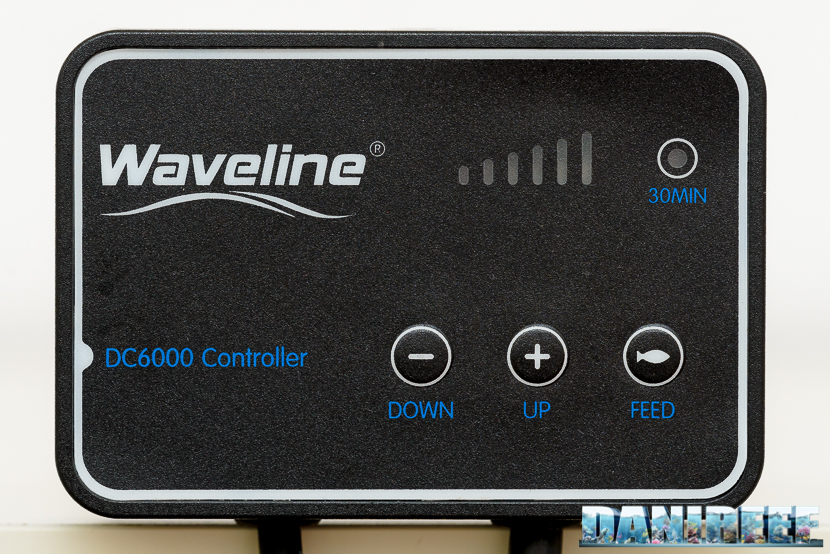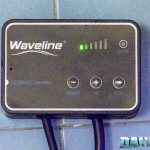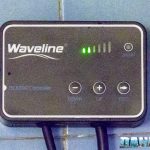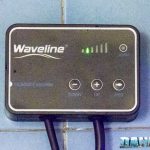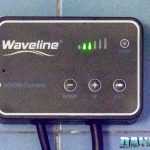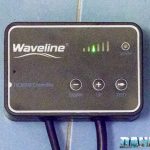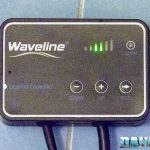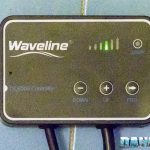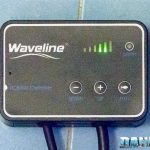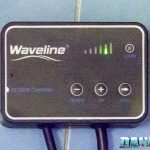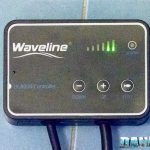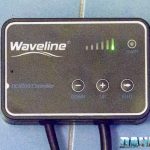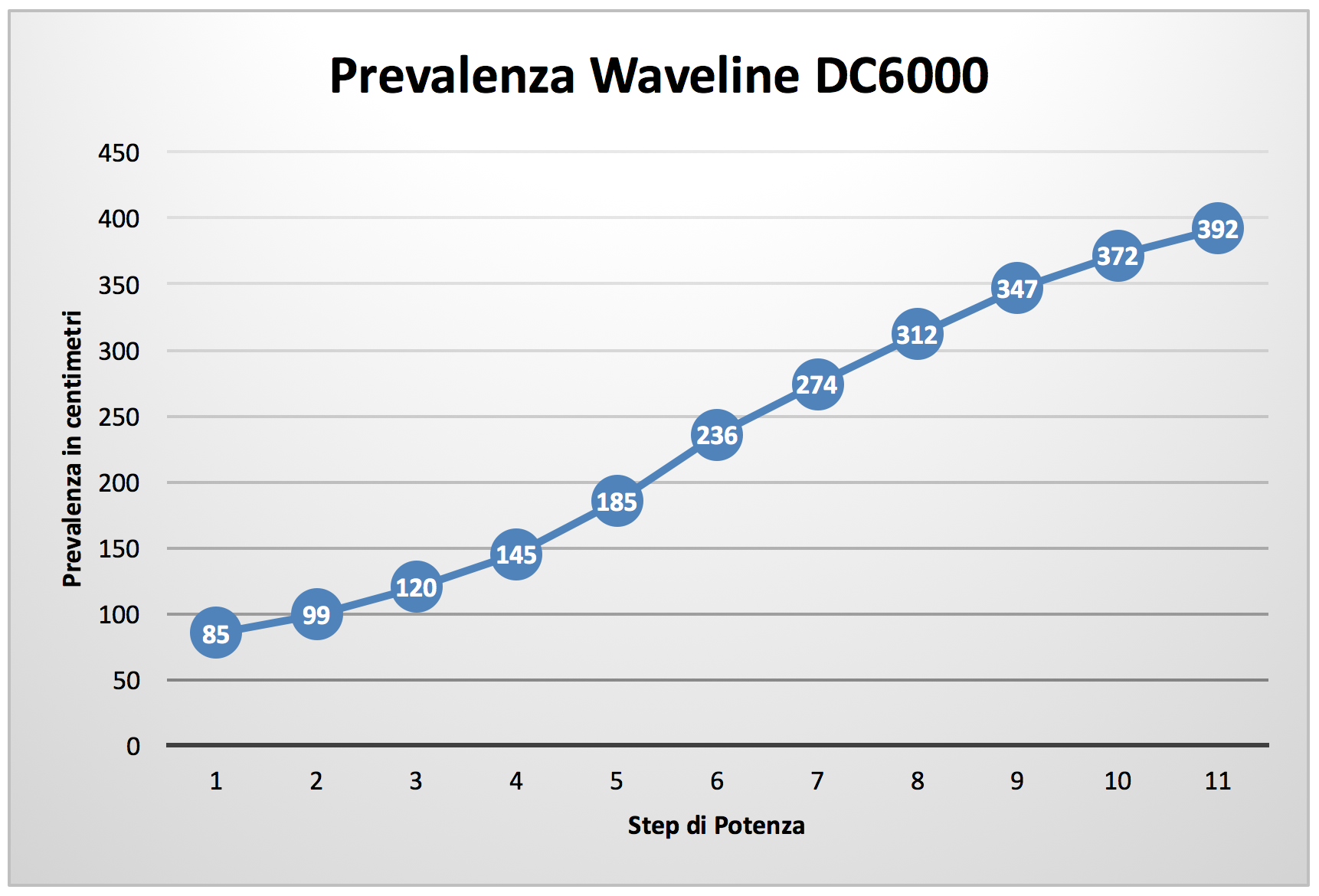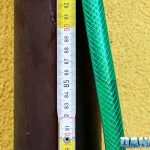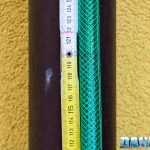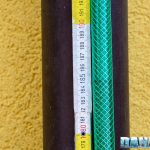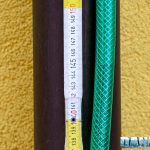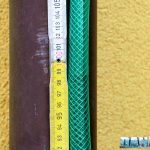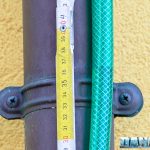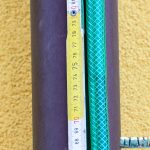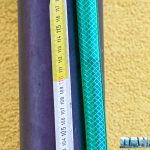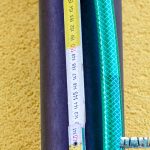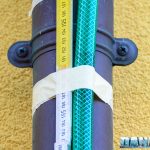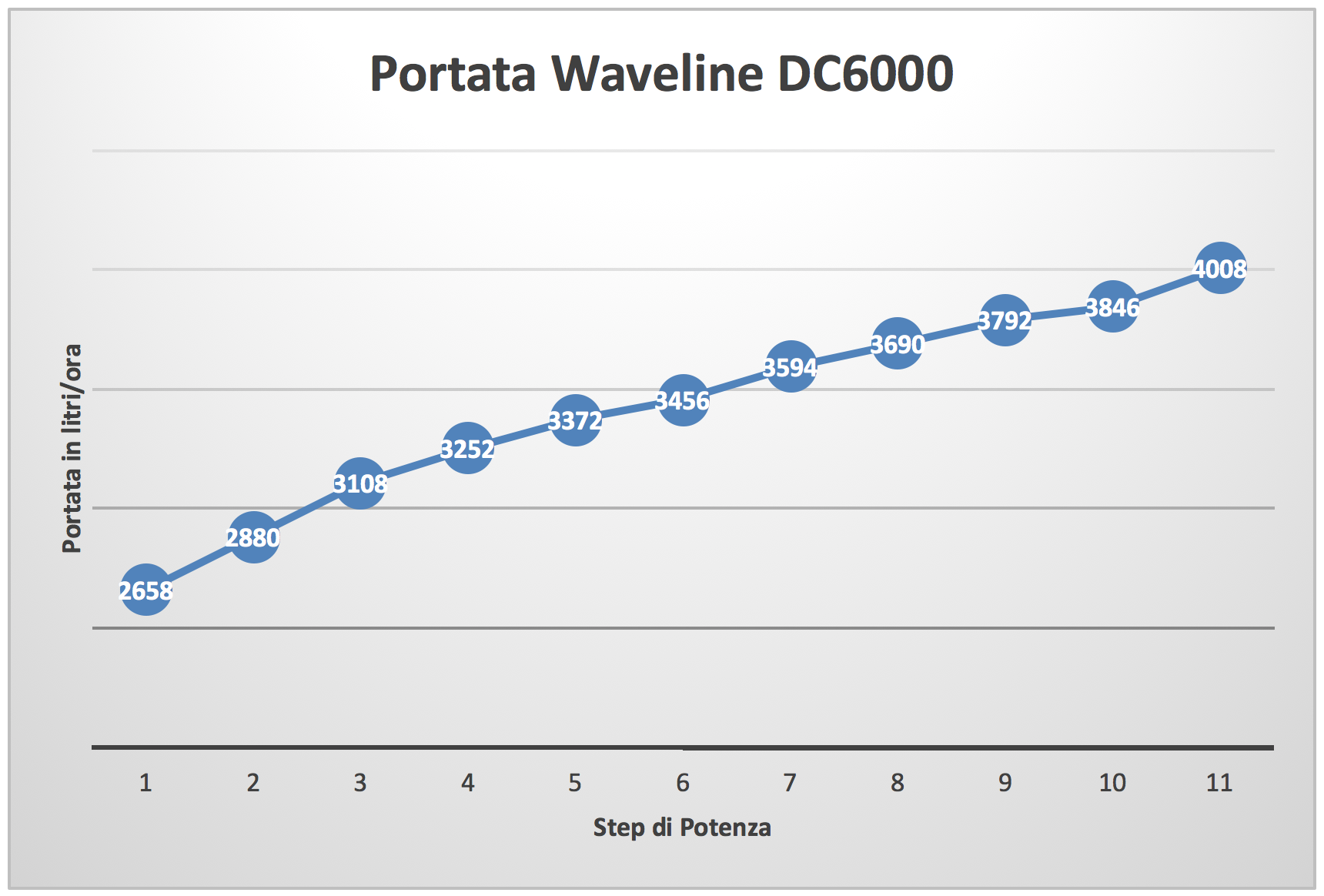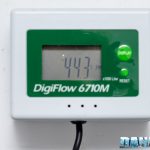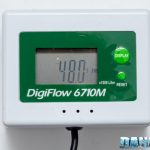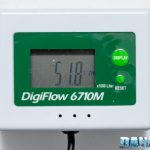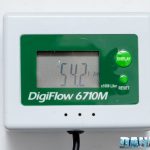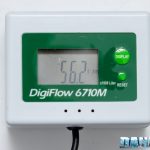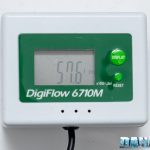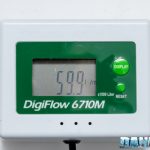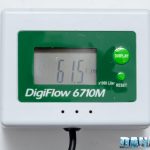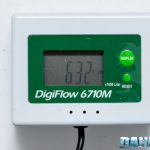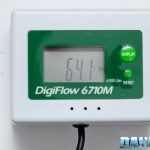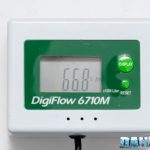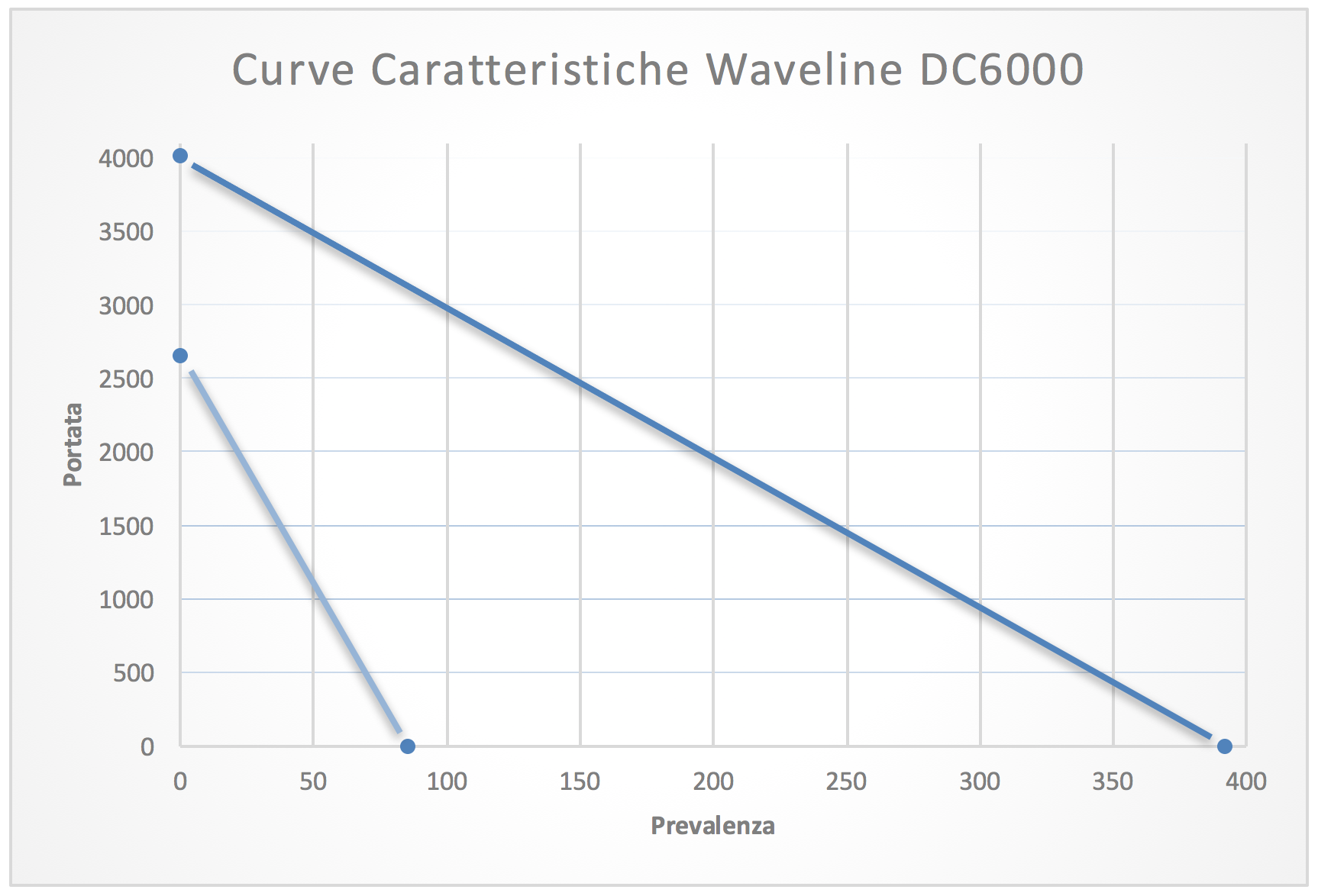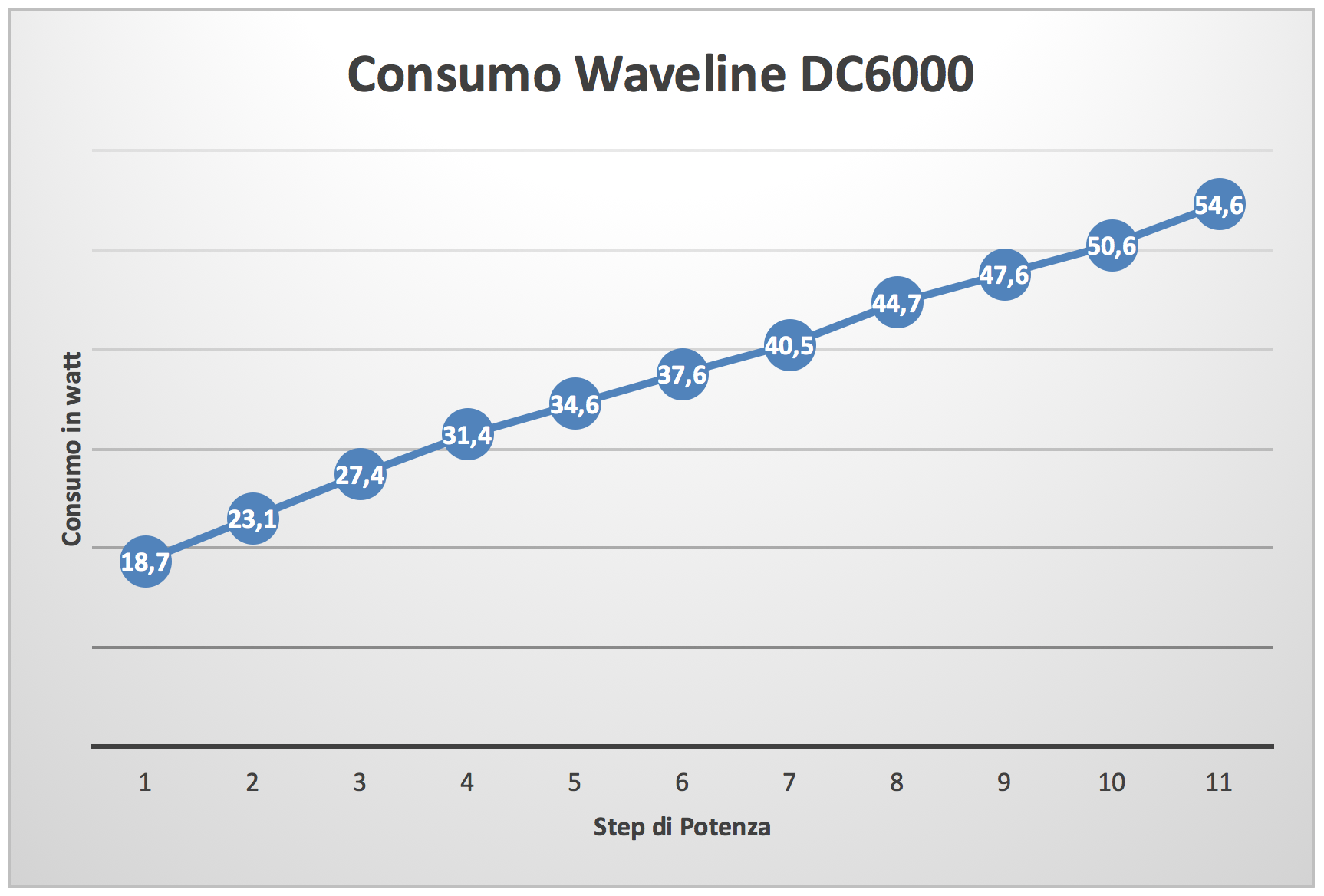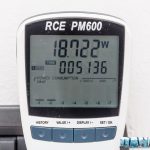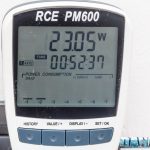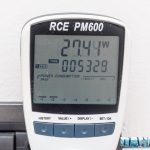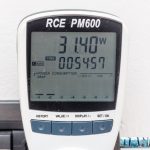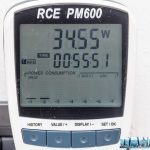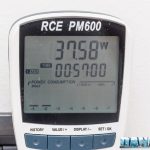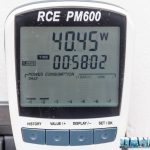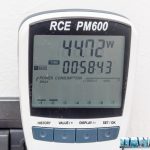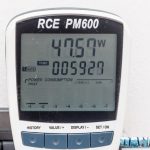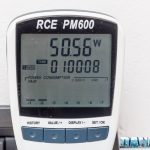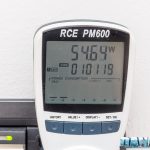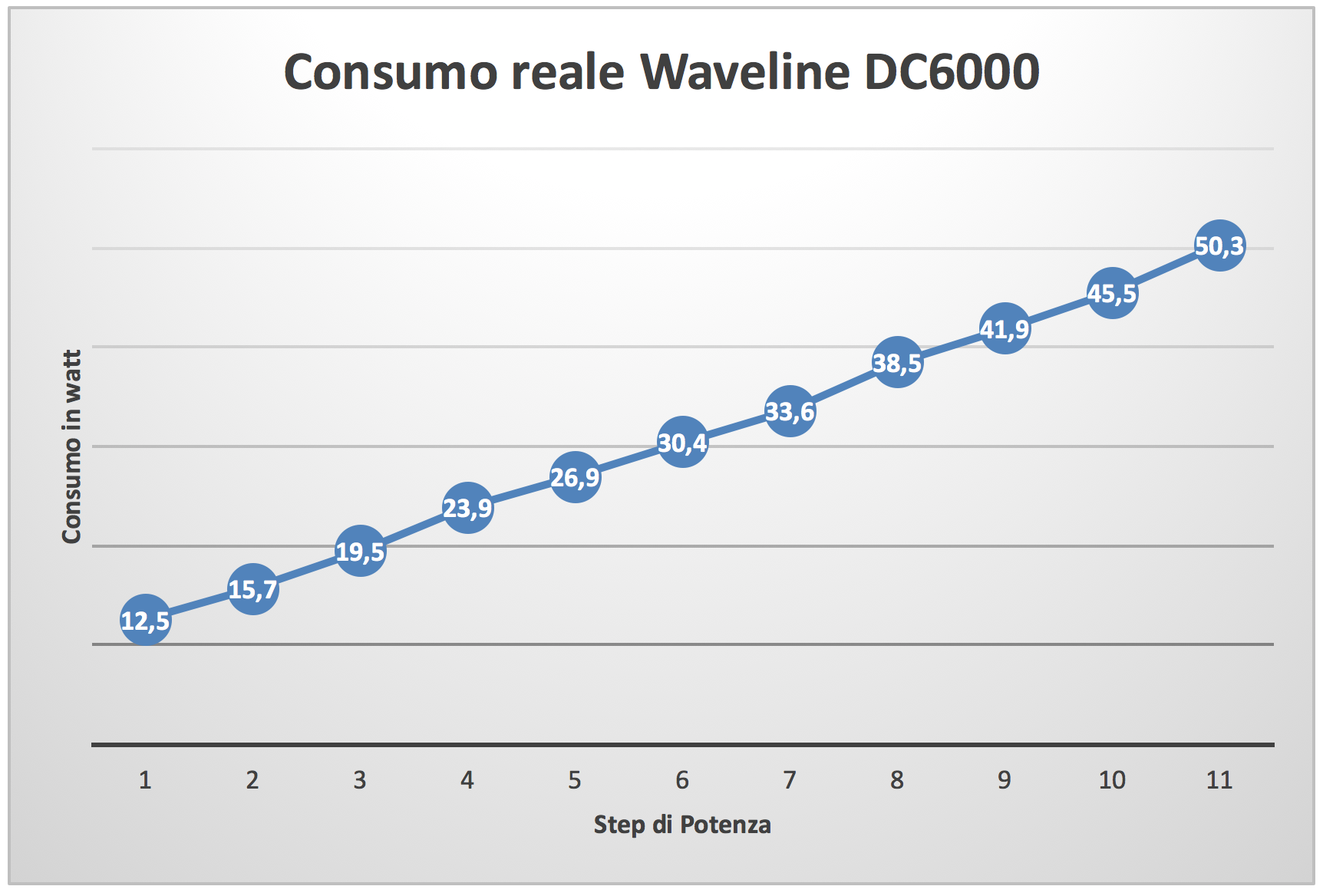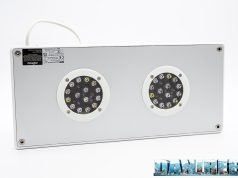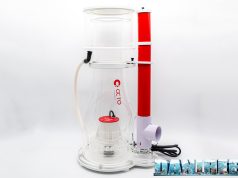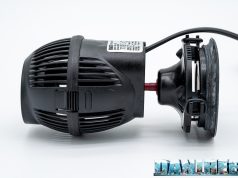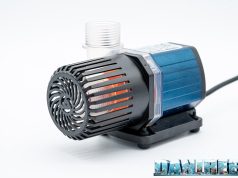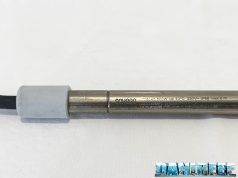The field test
As you can see here above the controller is extremely simple: by the two buttons “+” and “-” (or named “Up” and “Down“) is possible to adjust the power according to 11 scales of values. There’s another button for the fish feed, named “Feed“, which stops the pump for 30 minutes.
During the use the controller switches on a green led in the graduated scale. In the previous gallery you can see how the led light up during the use.
Our measurements
Hydraulic head tests
The first test we made was the hydraulic head measurement. As you know the head is the capacity of the pump to elevate the water over a certain amount. Usually the test is very easy, but this time it has been a little more complex because the declared head was well 4,4 meters. Moreover we measured the hydraulic head for each power level, and the pump has got 11 intermediate steps.
Our method is always the same. We have submerged the pump in a bucket with some centimeters of water; we have connected the pump to a plastic gardening tube, kept vertically; eventually we have measured the height of the water column compared to the water in the bucket. Considering the incredible heights we had, we have connected the tube to the house gutter and we have stopped the zero with tape considering the level of water inside bucket.
If you want to verify our tests you can see all our measurements: consider that we have used a new tape every 2 metres. Looking at the curve you can see how the hydraulic head doesn’t change in the power steps, but with a curve. The values anyway are well separated between them, for a comfortable set up in aquarium.
So the hydraulic head value measured is 392 cm, that is the read 192 plus the 200 cm of the previous tape.
The declared head is 440 cm. The gap is 11%, acceptable.
Flow rate tests
This measurement has been easy thanks to our new flow meter DigiSavant DIGIFLOW 6710M, it has been enough to directing the flux of the pump inside the flow meter with some connecting tubes and read the value on the display, in litres per minute, and multiply per 60 to obtain the flow rate in litres/hour.
We remind you that the measurement is valid in the conditions in which we have made it. The tubes may have led some loss in the system.
We measured the flow rate for each power step, in order to have a complete distribution of it.
The maximum range is 4008 l/h (that is 66,8 l/m*60), well under the declared 6.000 l/h. So the pump has reached the 67% of the declared value. It’s a little low than the declared data, but if you read our reviews you know that there aren’t many pumps that have surprised us due to their rate flow values. For this reason we can consider this 67% like a value just barely under the average. And we faced cases in which we tested pumps with a flow rate less than the declared 50%…
Here below the measurements done:
Characteristic curve
The characteristic curve is that specific curve that unites the flow rate values with the various heads. Without an appropriate instrumentation it’s impossible to recreate it, so we just united the two extreme points of flow rate and head (at the step 1, the minimum of the pump, and at the step 11, the maximum).
In theory if you choose the hydraulic head you need, for example 150 cm, you just have to trace a perpendicular line starting from that point, then see where it intersects the characteristic line and with which value it corresponds. With the Waveline DC6000 at the 11th step we can have an estimated flow rate about 2.500 l/h with 150 cm of hydraulic head. At step 1 the pump doesn’t reach 150 cm of head.
Consumption test
The survey of the instant consumption has been possible thanks to the RCE PM600 which is able to measure also the Cos(fi) (or power factor). The result is directly given in watt.
The consumption trend is enough linearly with the increment of the steps on the remote control: it starts with a minimum of 18,7 watt until a maximum of 54, 6 watt. The maximum consumption declared by Waveline DC6000 it’s 55 watt, perfectly in line with our measurements.
Thanks to the RCE PM600 we could also measure the cos(fi), which changes with the modify of the power steps. A minimum of 0,67 at 18,7 watt and a maximum of o,92 at 54,6 watt of consumption tell us that surely the magnet is neodymium, otherwise the cos(fi) would have been much lower.
So at the maximum power we have the 92% of active current, that is 50,3 watt, what we pay in the bill. The apparent current part, in this case 4,3 watt (that is 54,6 – 50,3 watt), is not considered in the domestic electric counter, so we aren’t going to pay more for a sort of thing that happens to all the pumps.
Considering a consumption of 50,3 watt and a energy cost of 0,27 euro per kwh, in Italy in this moment, we could use this pump continuously for a whole year with a consumption of 441 kwh, with a cost of 119 euro a year, or 9,9 euro in a month.
Here’s finally the real consumption of the pump, corrected with the cos(fi) value as read from the instrument.
Because of the pump dimensions and the lacking of an appropriate space we couldn’t do our usual noise test. We can only say that the pump seemed enough silent.




